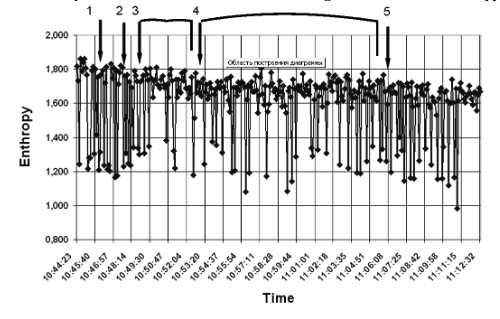THE EFFECT OF ACTIVE AND SILENT MUSIC INTERVENTIONS ON PATIENTS WITH TYPE 2 DIABETES MEASURED WITH ELECTRON PHOTONIC IMAGING TECHNIQUE
T. INDIRA RAO & HONGSANDRA RAMARAO NAGENDRA
Department of Yoga and Humanities, SVYASA, Bangalore, Karnataka, India
Patients with type 2 Diabetes Mellitus (DM2) may have autonomic imbalance. Studies have found that music influences the autonomous nervous system. The effect of Indian music on the autonomous imbalance of the patients with DM2 has not been investigated so far. The present study aims at comparing the difference of the effect of active and silent music interventions on the activation coefficient (shows the autonomous balance) of DM2 patients using Gas Discharge Visualization (GDV), a technique of imaging photonic light.
Methods and Materials
The study design is a single group repeated measures pre-post design with two kinds of music (active and silent) intervention. Written consent was obtained from the participants of Arogyadhama, the holistic health home of SVYASA, a Yoga University, Bangalore, South Karnataka. The time duration for both the interventions was 45min.each. 29 participants (mean age ± SD, 56.83 ± 7.85) men (mean age ± SD, 57.75 ± 8.24) and women (mean age ± SD, 54.78 ± 6.89) were analyzed using SPSS.
Results
Both the interventions showed significant effect on GDV parameters. But, there was a significant difference (p = 0.007) in the effect between the two types of intervention. It appears that silent music intervention (SMI) lead to boredom compared to active music intervention (AMI).
Conclusions
A single session of AMI achieved the significant change in the parameters towards improvement in the health condition which may be helpful in achieving autonomous balance of the DM2 patients.
KEYWORDS: Autonomous Imbalance, GDV, Music Intervention, Type 2 Diabetes Mellitus
INTRODUCTION Background
There are 62.4 million people living with diabetes in India and the growing prevalence of DM2 is a major concern for the individual as well as the government (International Diabetes Federation, (IDF, 2013). Lack of self efficacy to change life style and manage stress contributes to poor control of DM (Alipour et al 2012).
Stress and Diabetes
The autonomic imbalance that results from inadequate stress coping skills leads to several complications
(McEwen, 2007) in diabetics. This imbalance leads not only to an array of distressful symptoms such as persistent tachycardia/ bradycardia, digestive disturbances, bladder problems but also contributes too many lethal complications like nephropathy, neuropathy and/ or retinopathy that result from long term narrowing of the blood vessels (Kodl and Seaquist, 2008).
Stress Management in DM
Several stress management techniques have been tried with varying results both in diabetes and other life style diseases. Among these, exercise therapy has been found to be effective as it brings about autonomic balance by increasing parasympathetic tone and decreasing sympathetic activity (Routledge et al., 2010). Heat and massage therapy decreased serum cortisol in healthy adults pointing to reduction in stress levels (Lee, Y.-H., Park, B. N. R., & Kim, S. H. (2011). Meditation reduced sympathetic activity and increased parasympathetic activity in healthy male subjects (Telles et al., 2013).Yoga with combined physical postures, breathing techniques and meditation when used as an adjuvant therapy, reduced the autonomic dysfunction in patients with refractory epilepsy (Satyaprabha et al., 2008).
Music Therapy for Stress
The beneficial effects of Music as an art therapy to manage stress has been recognized since nineteen seventies (American Association for Music Therapy, 1970). Relaxing music reduces not only subjective anxiety, but also the potentially harmful stress reactions (Wendy, Nikky, & Richard, 2001). Subjective anxiety reduced in normal healthy men and women after listening to relaxing music (Knight & Richard, 2001). State anxiety reduced in the students after exposure to a stressor (Labbe, Schmidt, Babin, Pharr, 2007). Both joyful and relaxing music together and independently with different combinations reduced hyperglycemia (Cioca, 2012).
GDV as a Measure of Stress
Measurement of stress has been a major challenge to physiologists. Over the past two decades several psychological tools have been used starting from those that document the stressful life events to those that document the perception of stress by the individual. Heart rate variability, derived from Electrocardiogram records, is one of the accepted objective methods of measuring the responses of the autonomic nervous system to stress (Thayer 2012). A technique called gas discharge visualizer (GDV) that can detect abnormalities in the physiology and the effects of stress on autonomic balance, by tracking the changes in photon emission from the body surface has been investigated over several years by Korotkov et al. GDV is a technique of imaging the photonic light caused by the ionization of gas molecules around any object produced by the excited electronic emission from the object created under a low electrical current of high frequency (1024 hertz) and high voltage ( 10 KV) (Korotkov, 2004).
Studies on GDV
Studies have shown that GDV is sensitive to both the physiological changes and also changes in environment. Korotkov et al observed by a series of experiments on musical performances using remote sensors of GDV. Differences were observed in area, intensity and entropy of the environment during the performance compared to the time of interval. (Korotkov, 2009). Significant changes in area and intensity were observed after music therapy in patients with different ailments as compared to normal volunteers (Gibson, 2004).
Full text: THE EFFECT OF ACTIVE AND SILENT MUSIC – Indira Rao

